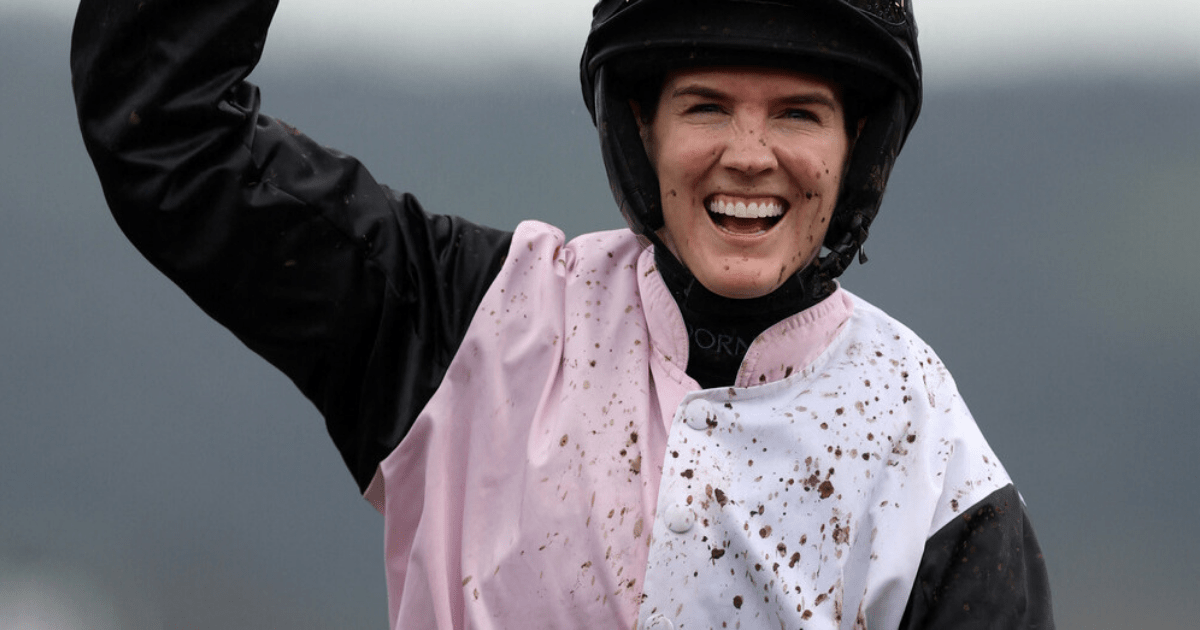Racing Star Shines Bright
Rachael Blackmore brought excitement to a gloomy Cheltenham Festival by clinching victory in the first race aboard Slade Steel.
Record-Breaking Jockey
Blackmore, who made history as the first woman to be crowned champion jockey at Cheltenham in 2021, powered Slade Steel to success in a thrilling race.
Punters' Favorite
Backed by a surge of support from punters, Slade Steel, trained by Henry de Bromhead, claimed victory at odds of 7-2.
Post-Race Reactions
Delighted with the win, De Bromhead praised Blackmore's performance and credited the rain-soaked turf for aiding Slade Steel's two-mile triumph.
Blackmore expressed her joy and admiration for the racecourse, highlighting the incredible training by De Bromhead and his team.
Grand National Winning Duo
Blackmore and De Bromhead, who secured victory at the Grand National in 2021, continue to impress with their partnership.
Excitement at Cheltenham
The victory sets a positive tone for the festival, leaving fans eager for more thrilling races to come.
Frequently Asked Questions
How do racehorses get bred for racing and how are they selected?
Usually, racehorses are bred to excel on the track. Breeders choose sires and mares who have proven racing pedigrees in order to produce offspring that are characterized by speed, endurance and temperament. Thoroughbreds, which are the most common breeds associated with racing in Britain, are closely tracked. Before starting their racing careers, potential racehorses will often undergo a selection process which includes pedigree assessments, physical assessment of conformation, and performance while in training.
What does it mean to describe a horse as a “stayer” in racing terms
A’stayer,’ in racing terms is a horse who excels at racing long distances. Typically, these distances are beyond one mile and four furlongs. Stayers must possess not only speed but also endurance to maintain a strong pace over extended races. Renowned stayers often compete in long-distance races such as the Ascot Gold Cup.
How do you ensure the safety and well-being of both horses and riders during a race.
In UK horse racing, the safety of horses and riders are of paramount importance. To ensure high safety standards are met, racecourses must adhere to strict regulations. These include the quality and condition of the jumps as well as the track. Horses must be examined before and immediately after races. The jockeys wear protective equipment like body protectors or helmets. A rapid response team and veterinarians are on call to respond quickly and effectively in the event of an incident.
There are different types of races for horses in the UK.
There are several different horse races that take place in the UK. Most of them fall under two main categories, Flat racing and National Hunt Racing (or jump). Flat racing does not include obstacles and is run on flat tracks from 5 feet to more than 2 miles. National Hunt racing is a form of horse racing that emphasizes the speed of the horses and their ability to jump. Races such as steeplechases or hurdles are characterized by a variety of obstacles. There are many variations of these two broad categories. For example, handicaps, maidens and conditions races. Each with its own rules and criteria.
What is the role of a steward in horse racing?
Stewards ensure that racing is fair and conducted according to rules. They oversee the conduct of jockeys trainers and other racing staff, monitor the races for rule violations, and hold investigations into any incidents. Stewards have the power to issue penalties such as fines and suspensions in the case of rule violations.
How do I learn how to read a racing card?
Reading a racecard is crucial for understanding the key information about a race and the horses running in it. A racecard lists the following details: the horse’s age, weight, trainer, jockeys, past form figures, and the color of silks worn by jockeys. You can make better decisions about your bets by learning to interpret the data. As part of customer service, many racecourses and betting companies offer guides on how to read racecards.
Statistics
- Around 14,000 thoroughbred foals are born each year in the UK with the goal of becoming top racehorses.
- The annual Cheltenham Festival has an economic impact of over £100 million for the local Gloucestershire economy.
- The Grand National at Aintree boasts a prize fund of around £1 million, making it the most valuable jump race in Europe.
- The Royal Ascot, held annually in June, draws crowds of 300,000 over its five-day meeting.
- Horse racing contributes an estimated £3.7 billion to the UK economy directly and indirectly each year.
- In the UK, more than 14,000 people are employed directly in the horse racing industry.
External Links
timeform.com
thejockeyclub.co.uk
ascot.com
betfair.com
thejockeyclub.co.uk
thejockeyclub.co.uk
How To
How to Bet On The Grand National
The Grand National steeplechase is the UK’s biggest steeplechase. Betting can be made at Aintree Racecourse or online. For beginners, simpler bets like ‘win’ or ‘each-way’ are advisable, with the latter bet covering both a win and a place finish. Before placing a wager, research the horse’s performance, the trainer’s past, and the jockey’s experience. To understand the potential payouts, take advantage of online bet-calculators and betting offers. Always remember that betting is supposed to be fun. So, bet responsibly and don’t bet more money than you can afford.

